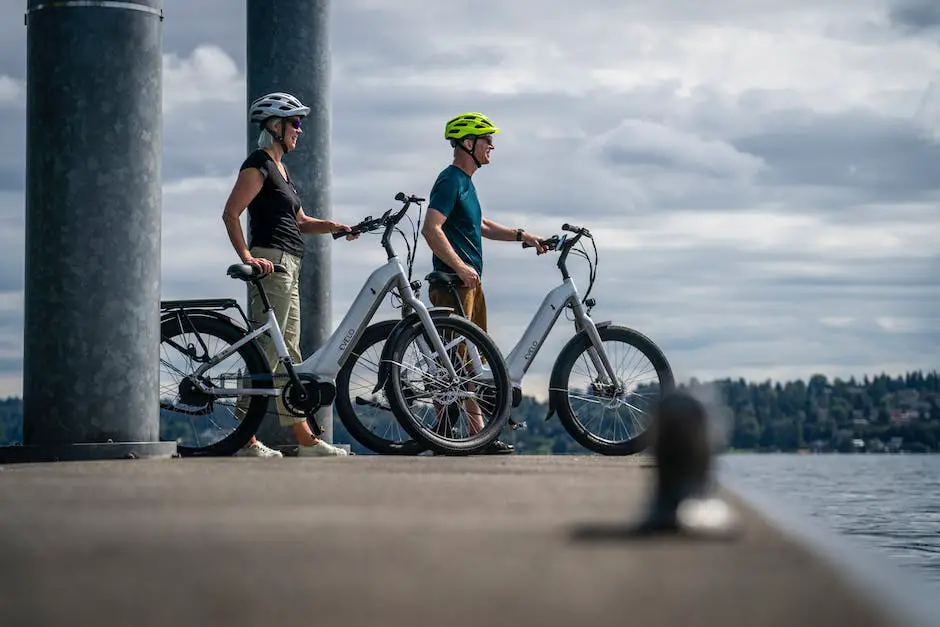Imagine conquering the daily commute with increased efficiency, embrace the open road with the wind in your hair, and nurturing your well-being all while being environmentally conscientious. An electric bike can help you achieve all this and more. With an amalgam of health benefits, substantial cost savings, and a reduced carbon footprint, electric bikes are pervading the market as a popular alternative for traditional modes of transport. In the following discussion, we’ll delve deep into the multifaceted advantages of electric bikes, discern the potential savings of making the switch, explore the variety of e-bikes available, and finally, dispel some common misconceptions around e-bikes. Take this journey with us to discover how e-bikes could enhance your daily commute and bring a newfound zest in your life.
Understanding The Benefits of Electric Bikes
Electric bikes or e-bikes, as they’re popularly known, are sweeping across the globe in waves, and for good reason. They’re an incredibly advantageous option for daily commuting. It’s not an overstatement to say they are transforming the way we move. So, if one has not explored the fascinating world of e-bikes yet, buckle up! Here’s all the scoop on why e-bikes can very well be the game-changer you’ve been looking for:
-
The Eco-Friendly Option:
-
Health and Fitness:
-
Beating the Traffic:
-
Economical Decision:
-
Cater to Greater Distances:
-
Ensuring Inclusivity:
E-bikes embody one of the purest forms of sustainable transport. Their negligible carbon footprint as compared to cars and motorbikes, along with the very fact that they use renewable electricity instead of gasoline, makes them the epitome of green transit. Choosing an e-bike for daily commuting underscores a commitment to environmental responsibility.
Sure, e-bikes may have an ‘assist’ mode, but that doesn’t absolve riders from pedaling. Engaging in mild to moderate exercise, depending on the e-bike’s settings, the rider can still have a healthy dose of daily activity. This daily “exercise in disguise” can lower stress levels, improve cardiovascular health, and boost overall fitness. Now isn’t that a fun way to stay fit while commuting to work?
As cities continue to sprawl, traffic congestion has become a ubiquitous issue. E-bikes come in as pocket rockets that can easily outmaneuver this metropolitan mayhem. Their ability to access bike lanes and navigate through tight spots can dramatically cut down commute times.
While the upfront cost of an e-bike might seem considerable, the investment pays for itself over time. Concerns about gas prices, expensive parking, vehicle servicing, and insurance premiums vanish into thin air with e-bikes. With their minimal operational and maintenance costs, e-bikes are decidedly a cost-effective commuting solution.
One of the greatest advantages of e-bikes is their ability to make commuting over longer distances feasible for everyday riders. With electric assist, e-bikes can swiftly cover vast stretches without leaving the rider exhausted or drenched in sweat, making them ideal for cross-city commutes.
E-bikes do a great job at promoting inclusivity. They make cycling accessible for people with certain health conditions or physical limitations who may find regular biking too strenuous. E-bikes empower more people to take up cycling as their preferred mode of commuting.
Savoring the open-air ride, whizzing past stalled traffic, taking in the sights, sounds, and smells of your local streets is utterly empowering. An e-bike commute renders an immersive, enriching experience that few motorized vehicles can match.
With e-bikes, the journey really is as important as the destination! So, why wait? It might be time to saddle up on an e-bike and bid the old, traditional commute goodbye. Take a ride on the eco-friendly, healthy, and convenient side of life. You’ll likely see why countless others have already switched and do not see themselves ever going back.

Savings of Switching to An Electric Bike
Stepping into the financial realm of owning an e-bike for the daily commute, we’re set to uncover just how much dollar-saving potential these electrifying hybrid models possess.
Right from the get-go, it’s crucial to highlight that e-bikes, though having a somewhat steep initial investment, can save you boatloads of cash in the long run. Just imagine cutting loose the strings binding you to gasoline or steep public transportation costs. With an e-bike, you essentially run on electricity, which, compared to the cost of fuel or bus tickets, is downright economical.
Now, for a deeper dive into the numbers. Let’s say, hypothetically, you drive a car that gets about 25 miles per gallon for a daily commute that spans around 20 miles round-trip. The current national average cost for gasoline hovers around $3 a gallon. So, for five workdays, you’d likely be spending approximately $12 on petrol alone. Add that up over a year, and you’re looking at around $600.
On the flip side, let’s say you switch to an e-bike, which typically uses roughly 0.4 to 0.5 kWh for a 20-mile ride. Using the average residential electricity rate in the U.S of around 13.2 cents per kWh, a round-trip commute on your e-bike would cost you about 5-7 cents. Multiply that by 5 days a week and 52 weeks a year, it amounts to less than $20 a year. Yep, you read that right. On your yearly commuting expenses alone, an e-bike could potentially save a significant $580!
Remember though, these figures don’t even factor in what you would save on car maintenance, which can be substantial when you’re piling on that many miles daily. With an e-bike, the cost of upkeep is considerably less. Apart from routine maintenance of the brakes, tires, and battery, there’s really not much else that requires regular attention.
Lastly, let’s touch on possibly the most significant and overlooked cost saving of all – your health. Sure, this isn’t a monetary saving per se, but the benefits of integrating exercise into your daily commute cannot be overstated. Regular physical activity is linked with lowered risk of chronic diseases and enhanced mental wellbeing, potentially reducing medical expenses in the long-run.
So there you have it, arm yourself with an e-bike, and you’re not only investing in a more sustainable, inclusive, and healthy commuting method but more likely than not, you’re buying into an opportunity to save a substantial chunk of change – a win on all fronts! Remember, the e-bike isn’t just a mere means of transportation, it’s a lifestyle, and adopting it could mean significant savings and improvements in multiple facets of life. Hop onboard and ride into this electric revolution!

E-Bike Varieties and Their Features
Diving into the realm of electric bikes (e-bikes), a veritable heaven for passionate cycle enthusiasts and eco-conscious commuters, there are several distinct types to consider. Each comes with features tailor-suited to varying purposes and convenience. When picking out the right e-bike for your commute, there are some pivotal facts to keep in mind.
Let’s embark on a journey to explore the varieties of electric bikes and what sets them apart. Essentially, there are three major types: pedal-assist, power-on-demand, and speed pedelecs.
Pedal-assist e-bikes, also known as Pedelecs, give cyclists an extra boost as they pedal, making it easier to tackle steep hills or long distance commutes. The motor only activates when the rider is pedaling, keeping the human-to-machine power balance intact. Perfect for a morning commute, this type can save a load of sweat and ensure a fresh arrival at work.
Power-on-demand e-bikes usually come with a throttle and can be powered purely by the motor. Useful for those days when the muscles demand a break, this type is well-suited for cyclists needing a bit more versatility in their daily rides.
Speed pedelecs, the third type, are primarily for the thrill-seekers, reaching speeds of up to 28 mph. These bikes often require a motorcycle license to operate in many states due to their higher speeds.
Having brushed over the types of e-bikes, it’s equally important to delve into what features to look for when choosing one for commuting.
Battery capacity is a key factor. Depending on your commuting distance, you will want a battery that can manage without constantly needing a recharge. Battery lifespan also varies, typically between 500-1000 full charge cycles before starting to degrade, it’s an important consideration when purchasing an e-bike.
Motor location should also be taken into account. While some bikes have the motor in the front hub, others have it in the center. The positioning of the motor can impact how the bike handles, with center-mounted motors typically offering a more balanced ride.
Then there’s the weight of the e-bike. A lightweight model might be more appealing if your commute involves carrying the bike up stairs, onto train platforms, or for storage purposes. It goes without saying, the lighter the bike, the less effort required to pedal and maneuver in congested places.
Next, consider the bike’s frame size to ensure a comfortable ride. A bike that’s too large or small can become a source of discomfort. While most manufacturers offer an array of sizing options, take the time to find one that fits you like a glove.
Lasty, but by no means least is the bike’s durability and ease of maintenance. Opting for a reputable brand that can provide support, reliable parts and has a wide service network is a wise move.
Untangling the world of e-bikes might seem intimidating initially, but being mindful of these factors during purchasing will ensure not only a smooth ride but also a wise investment. Cheers to discovering a new path of sustainable commuting!

Overcoming Common Misconceptions About Electric Bikes
Unveiling E-Bike Misconceptions: Clearing the Electric Air
The world of electric bikes, or e-bikes, is vibrant and exciting, resonating with the rhythm of progress and innovation. Yet, often, potential riders clutch at clouds of doubt, wrapped around misconceptions. Let’s dispel a few, shall we?
Common Myth: Electric Bikes are Lazier Than ‘Normal’ Bikes
Often there’s a sentiment that using an e-bike means a lower physical effort, hence less exercise, compared to traditional cycling. However, substantial scientific research indicates that while e-bike rides may demand less intense physical exertion, they tend to be longer, resulting in comparable or even higher energy expenditure. Moreover, e-bikes often serve as a fitness gateway for those who wouldn’t otherwise cycle, silently championing an active lifestyle.
Common Myth: E-bikes are Dangerously Fast
Speed pedelecs aside, most e-bikes in the U.S. obey the federal law, limiting top electrically assisted speed to 20 or 28 mph – similar to, or barely higher than, the speeds experienced by fit cyclists on traditional bikes. Remember, the speed control rests in the rider’s hands, not in the bike’s motor.
Common Myth: E-bikes are too Expensive
While the initial investment might seem steep, dissecting the cost offers a different perspective. E-bikes slash recurring transport expenses like gas and parking, boasting lower per-mile costs than cars. Maintenance costs are lower too. Factor in possible health benefits, and you’re staring at an investment with compelling returns.
Common Myth: E-bikes are Heavier and Harder to Handle
Though typically weightier than their non-electric counterparts due to the motor and battery, modern e-bikes are progressively getting lighter. Many are designed with weight distribution in mind, offering excellent balance and ride feel. Plus, this “extra” weight becomes a non-issue once the rider starts pedaling with motor assist.
Common Myth: Battery Replacement Costs are Too High
E-bike battery technology has leaped forward, with major improvements in capacity and lifespan. Most e-bike batteries will last several years before needing replacement, and by then, the money saved from other transport expenses can comfortably cover it. Plus, battery costs are continually decreasing!
Common Myth: They’re Not Durable Like Traditional Bikes
In the early years, this might have been partially true. But today, most reputable brands build their e-bikes with design robustness and durability as top priorities. Built to last, they cater to intensive usage scenarios and require as much maintenance as your regular bike – maybe even less, thanks to fewer mechanical drivetrain components!
Venturing into the world of e-bikes is an enlightening ride towards progress – a transformative blend of health, convenience, and sustainability. Don’t let misconceptions hold you back. Embrace the e-bike world, ride further, do more, all while leaving a smaller carbon footprint behind. Happy pedaling!

From the thoughtfully analyzed benefits to a clear breakdown of cost savings, a comprehensive survey of types, and addressing prevalent misconceptions, it becomes perceptibly clear why an electric bike is worth considering for daily commute. They are not just practical, cost-effective, and environmentally friendly solutions, but also introduce an element of joy, convenience, and fitness into the daily routine. Embarking on the e-bike journey allows us to traverse our regular paths with more joy and less fuss. The switch to an electric bike, therefore, is more than just a choice – it’s a lifestyle transformation that imprints positively on both personal health and societal sustainability. Here’s to making commutes an enjoyable part of the day, powering through traffic with ease, and contributing to a greener world one pedal stroke at a time.

